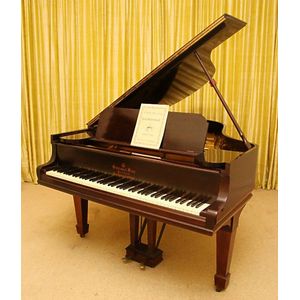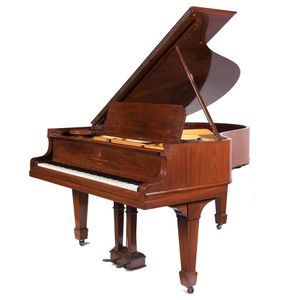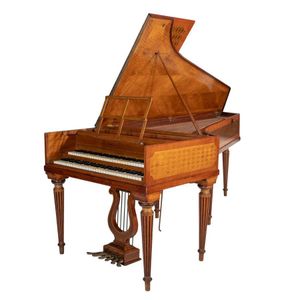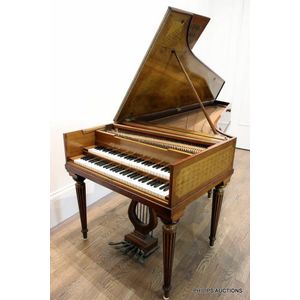Landowska's Pleyel Harpsichord, 1905
You must be a subscriber, and be logged in to view price and dealer details.
Subscribe Now to view actual auction price for this item
When you subscribe, you have the option of setting the currency in which to display prices to $Au, $US, $NZ or Stg.
- Lyre Motif - The lyre motif is an ancient decorative design that is believed to have originated in ancient Greece, where the lyre was a popular musical instrument. The lyre itself was often decorated with ornate carvings and designs, including the iconic lyre motif.
In ancient Greek mythology, the lyre was associated with the god Apollo, who was the patron of music and the arts. The lyre was said to have been invented by the god Hermes, who presented it to Apollo as a gift. As a result, the lyre became a symbol of creativity, inspiration, and artistic expression.
The lyre motif typically features a curved or S-shaped body, with strings extending upwards from the base. The motif was often used in architectural decoration, as well as on pottery, jewellery, and other decorative objects. - Important - Important is a word used in the antique trade to indicate an object should be ranked above other similar objects, and is therefore more valuable.
The object could be considered important because it is by a famous designer or maker, has been shown at a major exhibition, is of exquisite workmanship, is rare or is a "one-off", was made for an important patron, and so on.
Even further up the pecking order are objects that are described in catalogue descriptions as highly important or extraordinarily important.
This item has been included into following indexes:
-
musical instruments
- harpsichord 8
- pianos 104
Visually similar items

A fine Bechstein satinwood inlay medium grand piano c1895, serial number 21151 (underneath the case) corresponds to that found on the music stand

Steinway boudoir grand piano, model O, 1917, manufactured in Hamburg in mahogany case. Number 186659

A Steinway & Sons mahogany baby grand piano, 1911, with ebonised and simulated ivory keys, serial no. 151664, 180 cm long. Provenance: The Collection of Sir Tristan and Lady Antico, Sydney

Important Pleyel double-manual harpsichord, 1905, property of Wanda Landowska 1905-7, Serial #22F823. This particular Pleyel was exhibited in the pianoforte Past at Sydney's Queen Street Galleries in the 1970s, and was pictured in the catalogue as item #24
